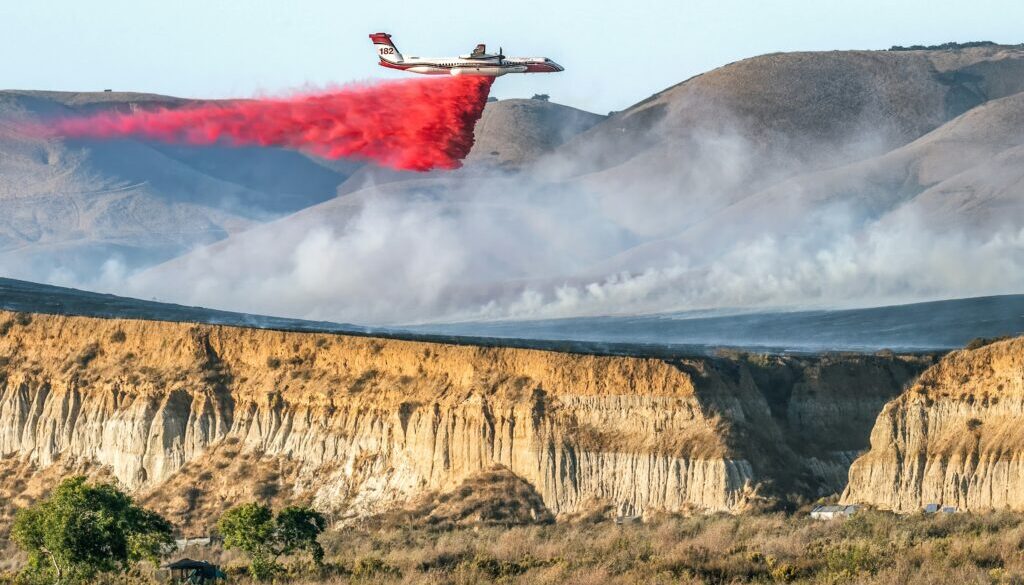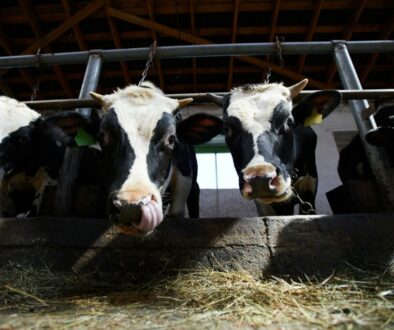High levels of hazardous heavy metals found in products used to fight wildfires
A new study shows that sprays and retardants used to fight wildfires contain surprisingly high levels of toxic heavy metals, a “disturbing” finding at a time when wildfires are generally getting worse.
The paper, published October 30 in the journal Environmental Science & Technology Letters, found that each of 14 fire suppression products examined contained at least eight of the ten heavy metals tested for, including chromium, cadmium, lead, and arsenic. Most of these metals or their derivatives are highly toxic, and known to cause a long list of diseases, including cancer.
All have been approved for use by the US Forest Service, which did not respond to a request for comment.
The findings raise questions about the ecological and human health impact of spraying large quantities of these materials over huge tracts of land in the western United States, according to study lead author Daniel McCurry, an environmental chemist at the University of Southern California.
McCurry and colleagues became interested in investigating these products’ chemistry as wildfire severity has increased in recent years and news reports showed these being used widely throughout California and other western states.
Wildfires have generally become more intense and widespread in recent years and decades, an expected outcome of human-caused climate change and land management practices. A total of just under 8 million acres have burned so far this year in the United States, a 24% increase over the 10 year average. Research suggests wildfires will get more severe and burn more acres in coming decades.
One of the most widely used products, Phos-Chek, contained high levels of chromium (at 72 mg/L, or parts per million) and cadmium (14 ppm), toxic metals that can cause many health problems, including cancer. If these levels were found in water, they would exceed the Environmental Protection Agency’s maximum contaminant level by a factor of 730 and 2,900, respectively.
Phos-Chek comes in various colors and formulations and is sprayed out of airplanes to hinder the advance of wildfires; one variety comes in a striking orange-red color that has been widely photographed. One of its primary ingredients is ammonium phosphate, a fertilizer, which acts to coat foliage in a fire-resistant layer.
The implications of all this are “kind of disturbing,” McCurry said, though how big of an impact these metals might be having in the environment remains as-yet unknown. “My intuition is that it’s more of an ecological risk than a human risk,” he said.
Many of these metals are toxic to fish, amphibians, and insects at concentrations well below what is found in these products.
In the paper the authors calculated that the amount of cadmium transported by 2010 post-fire rain in one Southern California drainage, known as Arroyo Seco, was roughly equivalent to the amount of the metal contained in the reported 216,000 gallons of Phos-Chek used to suppress the wildfire in the area.
According to the US Department of Agriculture, over 440 million gallons of these fire retardants were used on federal, state, and private land between 2009 and 2021, particularly in the western US. The authors calculate that all this material contained 838,000 pounds, or 419 tons, of these heavy metals.
Geologists have known for years that levels of heavy metals in water and soils can increase after wildfires, as the blazes are known to aerosolized and move around these elements. But it may be that these fire suppressants could help explain some of these spikes — something not previously recognized in the scientific literature or by policymakers, McCurry said.
“This study demonstrates that there is a new source of metals that can be introduced by firefighting efforts,” said Julie Korak, a researcher who studies water treatment and quality at University of Colorado Boulder who wasn’t involved in the paper.
The scientists became curious about the subject after a 2016 report highlighted the case of an air tanker base that was storing fire suppressants in central Washington. The base was cited by the state for multiple violations for exceeding allowable discharges of chromium, cadmium, copper, aluminum, and other metals.
McCurry and colleagues decided to buy samples of 14 products and tested them for metals. “Sometimes you take a guess and you’re right,” he said. Their first test “just lit up for chromium and cadmium and all the other metals we talked about.”
Some people within the federal government are apparently aware of the presence of the heavy metals. An internal US Bureau of Land Management guidance document for tanker bases cautions that concentrated fire “retardant contains ammonia, cadmium, and chromium.”
Government guidelines recommend not spraying Phos-Chek and other products in buffer zones of varying sizes surrounding streams and lakes, but accidental drops do happen, McCurry said. Between 2009 and 2021, approximately 1 million gallons of retardant, corresponding to 1,900 pounds of toxic metals, were dropped close enough to enter these waterbodies, the study noted.
Why these products contain these metals is unclear. McCurry and colleagues think it may be because these substances help prevent corrosion in the tanks they’re transported within.
Publicly available documents list many of the ingredients of these products online, but significant portions of what they contain remain a proprietary, unpublished secret. Perimeter Solutions, a company based in Missouri which manufactures Phos-Chek, did not respond to a request for comment.
(Featured photo by Tim Mossholder on Unsplash.)





November 4, 2024 @ 2:36 pm
There is an enormous unexplored human risk here, as well. Firefighters, who risk their lives to save people, homes and the environment, are obviously exposed to high levels of these chemicals on every single workday. Are they tested for, and subsequently treated for, poisoning from these chemicals? What about those who live in areas treated by these noxious substances?
November 3, 2024 @ 10:37 am
It is frightening to know that that we are purposely applying heavy metals onto our natural areas. Aside from obvious human exposure concerns there is the effect on other living organisms, e.g. fish, birds, insects, amphibians. Such a massive impact is not acceptable. Decimation of their ranks is just not in our interests.
Then there is the question of whether the fire retardants accomplish much.
This spraying process should be halted until manufacturers come up with products that do not contain toxic materials and show evidence that their materials are actually effective. Public moneys could be better spent on proper fire prevention policy such as wider use of controlled burns, siting of future development in less fire risk areas, and solving climate change such as moving away from fossil fuel use.